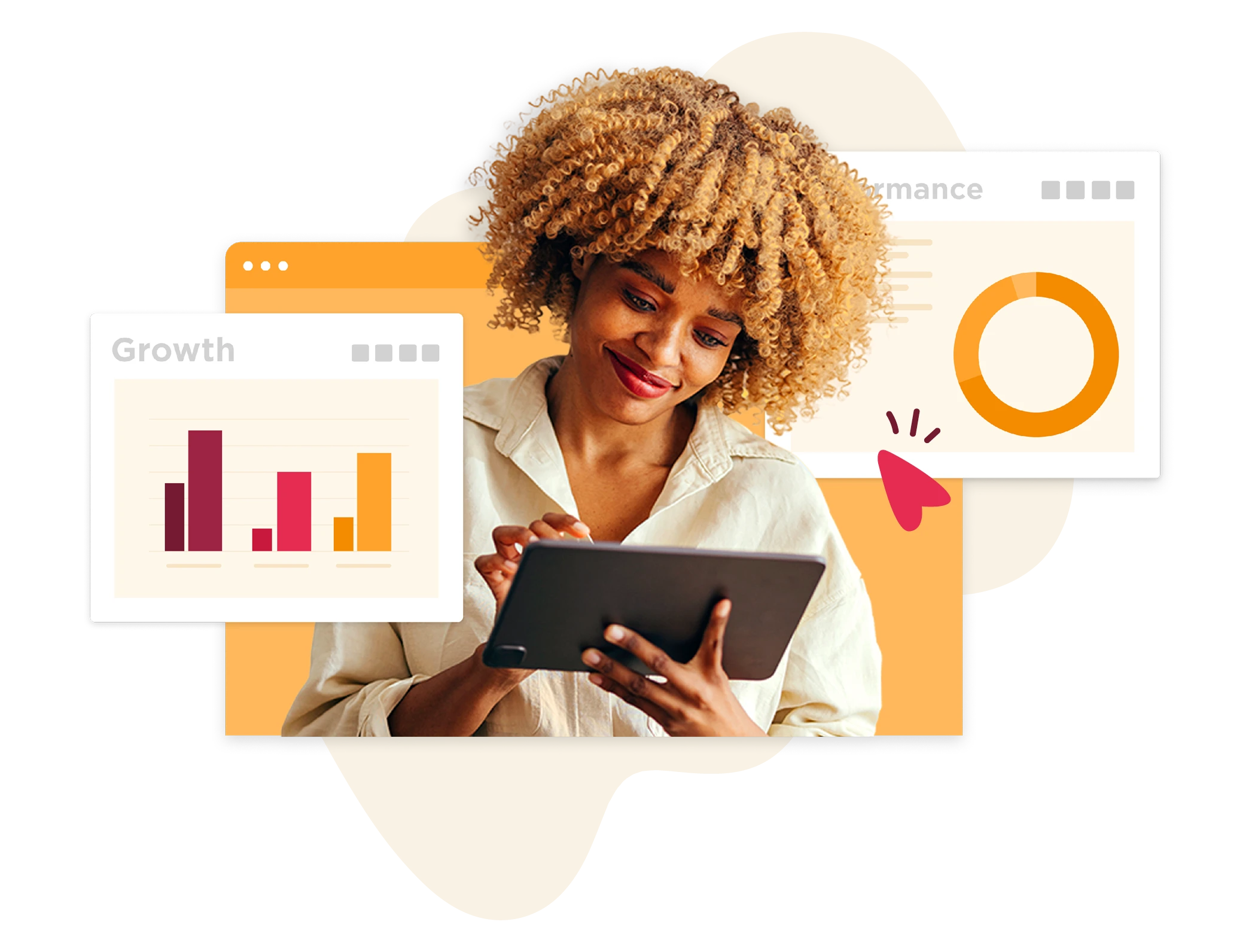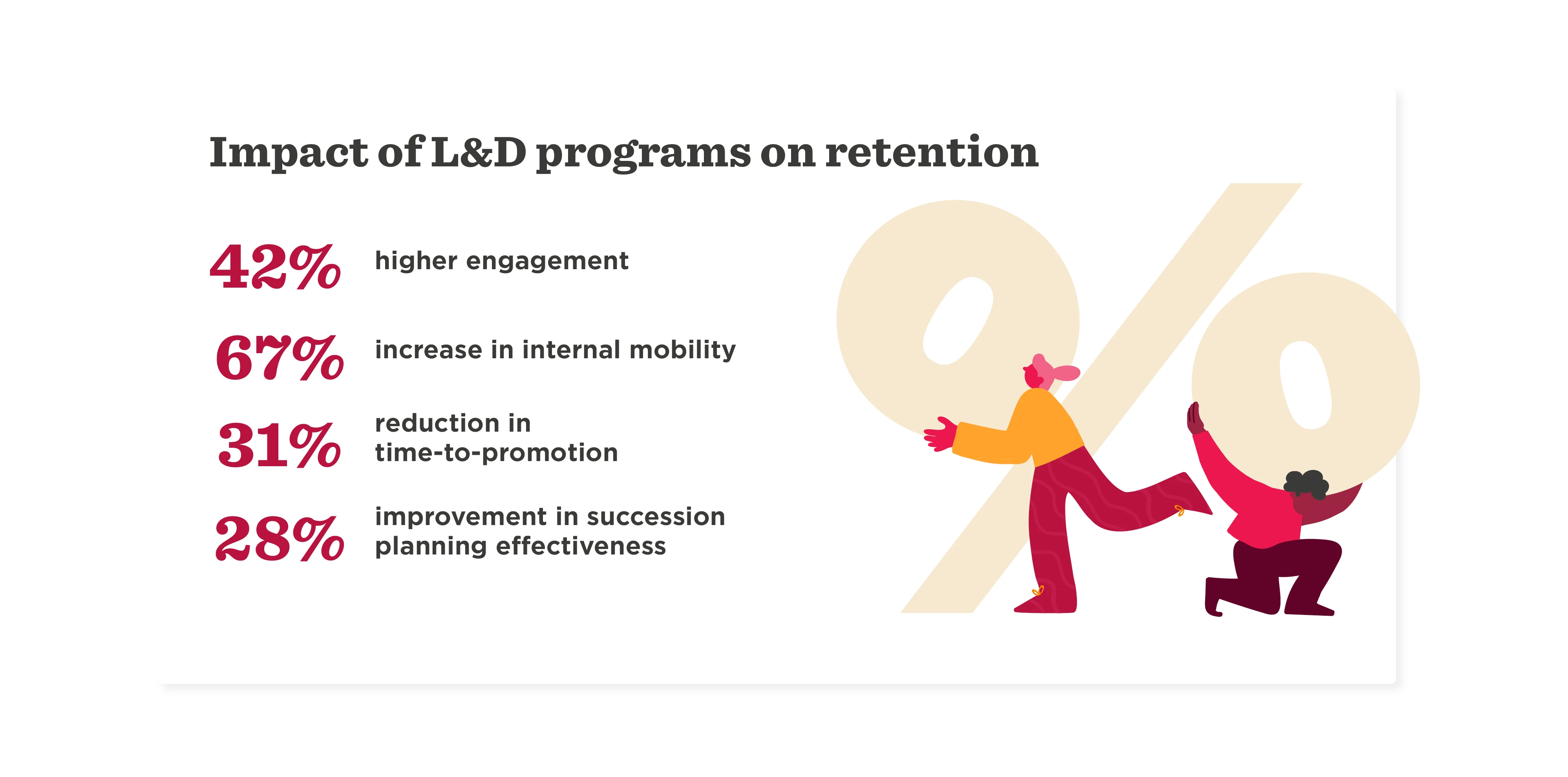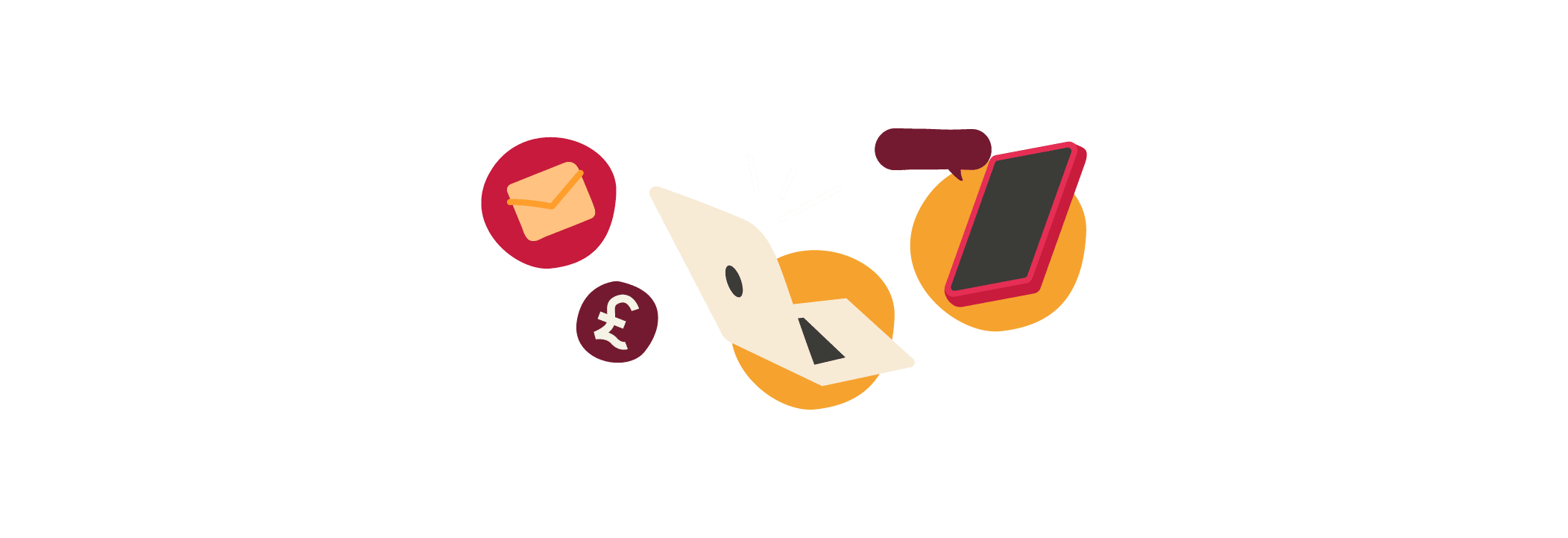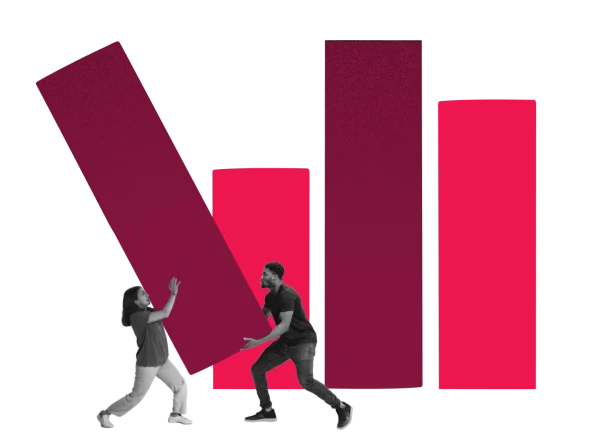The necessity of people analytics
So you’ve got the data. Now what?
People analytics isn’t just a game of collecting numbers—it’s about using those numbers to drive smarter decisions, win stakeholder buy-in, and prove HR’s business impact.
Yet, only 10 percent of organizations consistently achieve high-impact results with their people analytics, according to The Josh Bersin Company.
One major roadblock? A lack of standardized metrics and data fluency. Just six percent of people managers can analyze and explain data, making it hard to connect workforce performance with business outcomes.
Automation enhances efficiency, but it works best alongside human insights. In fact, 40 percent of customers believe automation-powered analytics doesn’t always deliver, highlighting the need for HR leaders to interpret and apply data effectively.
The key lies in knowing how to best apply these insights.
<<Transform data into HR wins. Build your case with people analytics. Get the guide today.>>
According to Gartner’s systemic business analytics model, integrating HR data with broader business metrics leads to better financial performance, productivity, and retention.
This means HR leaders can move beyond data collection to a new horizon: tactical HR.
Sitting between strategic HR and administrative HR, tactical HR connects high-level vision to day-to-day execution, ensuring people programs drive real business results. It’s all about showing—with data—how HR programs contribute to measurable business outcomes.
Embracing tactical HR allows you to refine decision-making, optimize resources, and justify investments.
This guide will show you how to extract real value from people analytics and turn HR from a cost center into a key business driver.

What is people analytics, and how does it differ from HR analytics and workforce analytics?
Many people use these terms interchangeably, but each serves a distinct purpose.
- People analytics. A data-driven approach to understanding and improving how people work. It helps HR leaders move beyond gut instinct and anecdotal experience to make strategic, evidence-based decisions that drive real impact.
- HR analytics. HR analytics focuses on the efficiency of HR functions. It tracks metrics like time-to-hire, turnover, and absenteeism—helping HR teams optimize processes and measure success.
- Workforce analytics. These look at the bigger picture, analyzing employee engagement, company structure, and workforce trends to help organizations plan for the future.
Understanding how these analytics work together allows HR teams to connect individual performance with overall business success.
What is ONA?
Organizational Network Analysis (ONA) is a method for mapping workplace relationships and collaboration patterns to uncover how work truly gets done..
For example, traditional org charts outline formal structures, but ONA reveals hidden influencers, knowledge hubs, and key connectors who drive innovation and efficiency. It provides a new lens for identifying high-impact individuals who might otherwise be overlooked.
By analyzing these networks, businesses can strengthen collaboration, improve decision-making, and create more connected, higher-performing teams.

The benefits of people analytics
Understanding workplace relationships through ONA is just one way people analytics helps businesses thrive. By uncovering how work actually happens—who collaborates, how decisions flow, and where knowledge is shared—HR leaders can take data-driven action to enhance teamwork, strengthen engagement, and improve performance.
But the impact of people analytics goes beyond relationships.
Today’s businesses are always looking for ways to build a thriving company culture that drives success.
As organizations move toward flatter structures and agile teams replace traditional hierarchies, people analytics provide real-time insights into employee behavior, skills, engagement, team dynamics, networks, and collaboration, helping leaders understand how people actually work.
These insights help people grow and succeed. They also directly impact the bottom line.
Companies that use data to optimize workforce strategies see:
- Higher retention. Engaged team members stay longer, reducing costly turnover.
- Better performance. Aligning people’s skills with business needs improves productivity.
- Greater innovation. Understanding collaboration patterns identifies key influencers and kindles fresh ideas.
When you know what truly drives success in your organization, you can make smarter decisions that fuel long-term growth.

<<Show the numbers. Tell the story. Prove HR’s value. Download the guide now.>>
Analytics for current decision-making
The real power of people analytics lies in how you use it.
Understanding workforce trends and collaboration patterns is just the first step—applying those insights is what drives impact. Businesses that integrate people analytics into decision-making see stronger teams, smarter resource allocation, and better long-term outcomes.
From improving how managers support their teams to boosting engagement and retention, the right insights empower businesses to take proactive steps toward success rather than just reacting to challenges.
Here are three ways to make people analytics work for you.
1. Optimize people management
Attracting top talent to your team is only half the battle. Keeping them engaged and growing is what drives long-term success.
People analytics gives businesses a clear, data-driven view of performance, retention, and career growth. It makes it easier to identify top performers and support people who might need extra guidance. By analyzing factors like work experience, tenure, and reporting structure, managers can uncover patterns and proactively reward high achievers, boosting motivation and engagement.
Tracking promotion trends and qualitative data also helps leaders align career growth with people’s expectations, ensuring they recognize potential managers early and develop them before leadership gaps arise.
2. Drive employee engagement
Keeping your people engaged is just as important as retaining them, but engagement is at a 10-year low. Only 31 percent of the U.S. workforce was engaged in 2024—a decline from 36 percent in 2020.
This disengagement is particularly pronounced among younger workers, with Gen Z experiencing a five-point drop in engagement last year. As expectations around work continue to shift, businesses can leverage smarter, data-driven strategies to keep their people engaged.
That’s where people analytics comes in.
By analyzing engagement surveys, productivity metrics, and workplace sentiment, organizations can pinpoint areas for improvement and implement targeted strategies to boost morale and performance.
One company that successfully leveraged people analytics is a large restaurant chain that linked employee sentiment to business outcomes. Their analysis showed that when managers scored 4.00 or higher on engagement-related survey categories, they experienced:
- A 16 percent boost in customer satisfaction
- 18,000 more customers per year
- A 10 percent reduction in staff turnover
The takeaway? When businesses invest in engagement, everyone wins. Team members feel more motivated (especially younger ones), customers have better experiences, and organizations see stronger retention and business performance.
3. Pay attention to retention
Motivated and engaged team members are more likely to stay. But what happens when they don’t?
Employee retention remains a key challenge for organizations, and recent trends show it’s getting even tougher.
The global employee turnover rate rose from 18 percent in 2023 to 20 percent in 2024. But the turnover rate isn’t just about percentages—it’s also about the cost to businesses.
Replacing a team member can cost up to three times their annual salary when factoring in recruitment, training, and lost productivity. And beyond the financial impact, high turnover also disrupts morale, lowers productivity, and weakens business performance—directly impacting growth.
To mitigate these challenges, HR departments are increasingly turning to people analytics to improve employee engagement and satisfaction and reduce attrition.
Organizations can spot patterns, identify flight risks, and take preemptive action before valuable talent walks out the door by analyzing data like:
- Churn rate
- Attrition by department, commute, duration of employment
- Onboarding experiences
- Engagement survey data
- Qualitative information from interviews and reviews
- Performance data to forecast future attrition
Retention isn’t just about keeping people. It’s about building a workplace where they want to stay. Examining people data allows leaders to anticipate issues and take proactive steps to retain valuable talent.
<<People analytics is more than numbers—it’s your key to influence. Download the guide.>>
Analytics for predictions and future decision-making
Retaining top talent is critical, but what if you could predict (and stop) turnover before it happens?
People analytics aren’t all about understanding what’s happening now—they’re a powerful tool for shaping what happens next.
By analyzing past trends and predicting workforce patterns, HR teams can anticipate potential challenges and proactively make smarter, data-driven decisions in hiring, development, and workforce planning.
Here’s how predictive analytics is driving the future of HR.
1. Improved recruiting practices
Hiring top talent is always going to be a challenge. But ensuring someone is the right fit for long-term success is even harder.
HR teams that harness people analytics gain a powerful edge, using data to identify which candidates will most likely thrive and which hiring strategies help build stronger, more successful teams. It’s also just as important to understand where past hiring efforts fell short as it is to recognize what works—turning insights into smarter, more strategic decisions.
With this data, HR professionals can reduce mismatches in both skill and culture, ensuring a smoother onboarding process and stronger team cohesion. These insights also help managers anticipate attrition and analyze trends in engagement, fulfillment, and potential disengagement to identify when team members may be at risk of leaving.
By applying these insights, HR teams can refine hiring strategies, strengthen onboarding, and foster a people-centric culture that drives growth, development, and long-term success.
2. Enhanced professional development
Recruiting the right people is only part of the equation. Supporting their growth is what turns good hires into great long-term contributors.
Organizations that build learning and development programs into their core business strategy are doing so much more than just upskilling their workforce. They’re creating career pathways for people, ultimately boosting engagement, strengthening retention, and building future leaders.
People analytics help organizations identify critical skill gaps and allocate resources where they’ll have the biggest impact—giving teams the tools they need to succeed.
As automation reshapes the workforce, upskilling in data literacy and emerging technologies is essential. Organizations that invest in automation-driven learning programs can future-proof their teams while making it easier for their people to adapt to new technologies and evolving business needs.
3. Harness the power of automation
The workforce is evolving, and so are the tools that support it.
As businesses embrace new technologies, AI and automation are transforming the way HR teams build their operations, reduce inefficiencies, and enhance productivity.
People analytics give you the insights you need to identify bottlenecks and implement automation where it adds the most value—from cutting down on administrative tasks to optimizing workflows that drive efficiency across the organization.
By thoughtfully integrating automation, companies can boost productivity without losing the human touch, ensuring HR remains as strategic as it is efficient.
How to make it work for your organization
Great HR is powered by great people, not just great technology.
HR professionals bring the insight, strategy, and leadership that turn people analytics from raw data into real business impact. When combined with a clear, adaptable approach, workforce insights become powerful tools for better decision-making, shaping stronger teams, and measurable business outcomes.
This is where tactical HR shines. With HR leaders at the helm, people analytics makes it easier to identify patterns, solve challenges, and take meaningful action, ensuring that people initiatives fuel business success.

Best practices in people analytics
HR professionals are the driving force behind effective people analytics. The best strategies leverage the power of data collection and know how to use the data to shape stronger teams, smarter decisions, and better business outcomes.
Tactical HR helps bring data to life by turning insights into action. Here’s how teams can make the most of people analytics:
- Align analytics with business priorities. The most impactful insights come from measuring what matters. Align people analytics with company goals to track the right metrics and build a strong case for executive buy-in.
- Scale with intention. A full-scale HR analytics rollout isn’t necessary from day one. Start small, refine your approach, and integrate insights gradually to achieve long-term success.
- Stay flexible. Business needs change, and HR teams can lead the way by adapting their people analytics strategy alongside shifting priorities and emerging trends.
- Prioritize data quality and accessibility. Metrics work best when they are easy to interpret, relevant, and easy to act on. Clear, relevant data empowers decision-makers at every level.
- Make accountability a priority. Identifying the right people to own specific metrics ensures that analytics drive action, not just reports. Engaging managers and HR leaders directly ensures insights can turn into meaningful change.
- Use data proactively. Predictive analytics help HR teams anticipate challenges before they become problems—whether that’s spotting disengagement, improving hiring decisions, or reducing turnover. Taking action early keeps your business ahead of the curve.
Data tells the story, but people bring it to life. The best people analytics strategies focus on relationships, behaviors, and the culture within your workforce.
By applying tactical HR, HR professionals can turn insights into impact, make smarter decisions, drive positive business results, and strengthen teams.
<<HR strategy meets hard data. Show your impact with people analytics. Grab the guide now.>>
Why workplace relationships matter
Great teams are built on skills and experience, but they genuinely thrive on strong peer-to-peer relationships.
HR professionals play a critical role in promoting collaboration, ensuring people—whether in-person, hybrid, or remote—feel connected and supported. When people have meaningful workplace relationships, they share knowledge, solve problems faster, and create a culture of engagement.
But how do you measure the impact of these connections?
Enter, people analytics. By tracking data, HR leaders can understand how team members interact, identify opportunities to strengthen collaboration, and prove the value of peer-to-peer engagement.
With the right insights, HR can design stronger people programs that help their people build relationships across teams, locations, and generations—leading to better teamwork, higher engagement, and stronger business outcomes.
Tracking workplace relationships
Thoughtful HR leadership is instrumental in building strong workplace relationships.
HR professionals can use people analytics to help identify key players in their workplace ecosystem who shape culture, drive engagement, and connect otherwise siloed groups.
Here are some common personas that surface:
- Brokers. These team members link otherwise unconnected groups, bringing diverse perspectives that fuel innovation and knowledge-sharing.
- Influencers. With wide, well-connected networks, influencers spread ideas quickly and help shape company culture by driving cultural alignment.
- Vulnerabilities. Single points of connection who, if lost, could leave teams or individuals disconnected from the larger network.
- Least connected. Team members who operate in isolation or have limited peer-to-peer engagement, potentially missing out on collaboration opportunities.
When HR understands these workplace dynamics, they can design initiatives that encourage meaningful connections, break down silos, and strengthen team cohesion—all of which contribute to higher engagement and better business outcomes.
Recommended For Further Reading
Using Organizational Network Analysis (ONA)
Great HR leaders can observe workplace relationships and use data insights to actively strengthen them.
With Organizational Network Analysis (ONA), HR teams can map how people connect across departments, locations, demographic groups, and roles to uncover opportunities for stronger collaboration.
By analyzing workplace connections, HR can better understand team dynamics, identify knowledge-sharing gaps, and ensure people have access to the support they need.
HR leaders can use ONA to compare groups within their organizations by measuring:
- Density. The level of interconnectedness in the workplace ecosystem.
- Centralization. Whether workplace connections rely on a few key individuals or are more evenly distributed.
- Reciprocity. The degree to which relationships are mutual, ensuring that collaboration is balanced.
When HR teams use ONA to take a data-driven approach to workplace connections, they can design smarter team structures, enhance collaboration, and build an environment where people feel supported—no matter where or how they work.

The success of every business depends on its people
Workplace connections shape business culture and drive success.
HR leaders who embrace people-first strategies and leverage people analytics can build environments where their people feel supported, engaged, and empowered to do their best work.
HR leaders today are moving beyond static reports and focusing on actionable insights that fuel strategy. By integrating HR tech, predictive analytics, and real-time workforce metrics, businesses can proactively improve retention, enhance engagement, and build a culture where people and organizations thrive together.
<<HR’s seat at the table starts with data. Use it wisely. Get the guide now.>>
